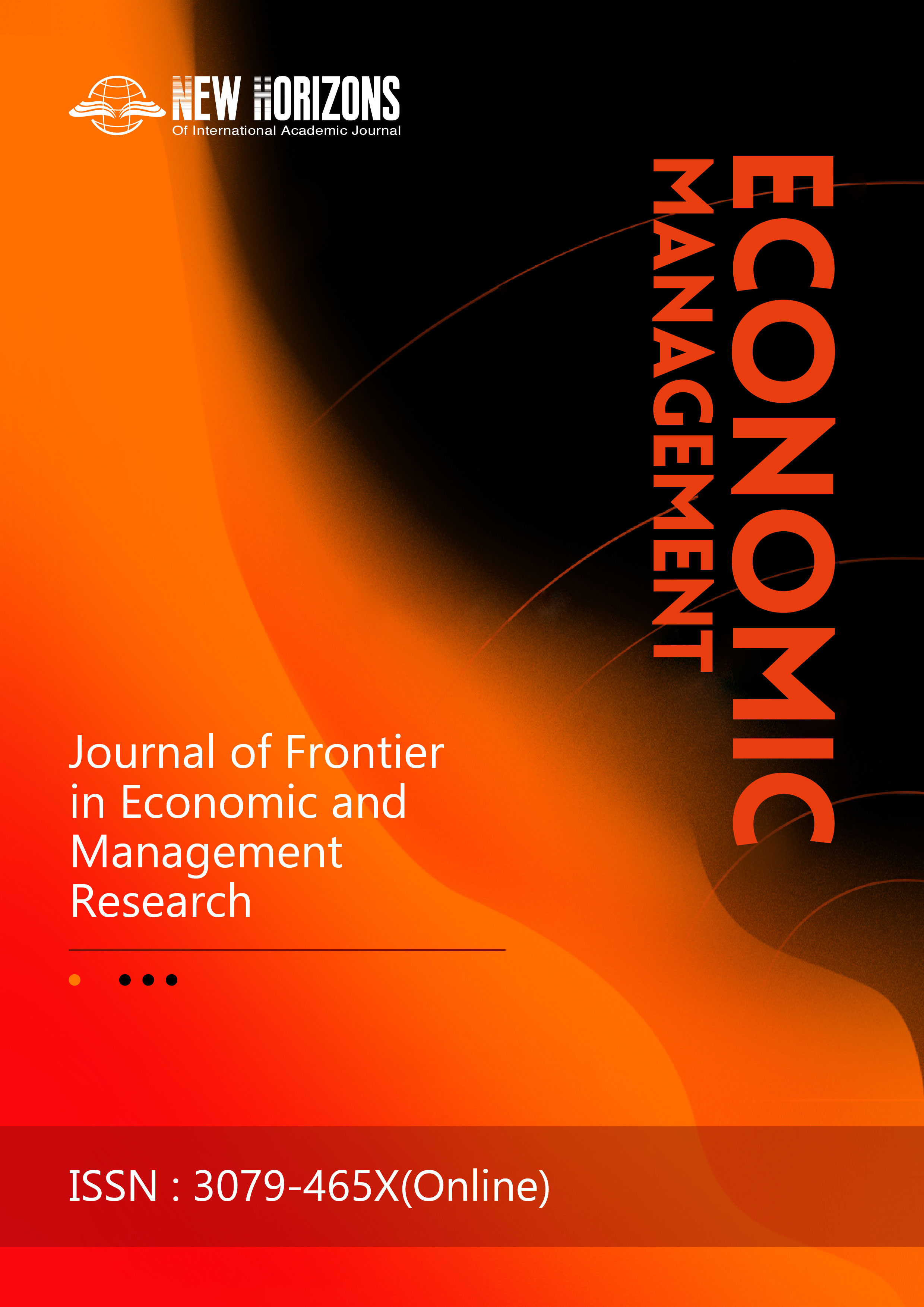The Browser as the Epicenter of the Digital Ecosystem: A Platform Economics Perspective on Market Evolution, Revenue Models, and Strategic Trajectories
DOI:
https://doi.org/10.63944/qty.JFEMR关键词:
Web Browser; Platform Economics; Digital Ecosystem, Multi-Sided Platforms; Revenue Models; Network Effects; Technology Strategy; Antitrust Law摘要
The web browser, once conceived merely as an interface for information retrieval, has evolved into a multi-sided platform (MSP) that orchestrates economic interactions across digital ecosystems. This study reframes the browser as a strategic access point that mediates value creation among interdependent user groups—end-users, advertisers, content publishers, and developers—thus functioning as both infrastructure and market actor. Drawing on Platform Economics and Digital Ecosystem Theory, this research examines how browsers have become central to digital competition, revenue generation, and regulatory intervention. Employing a hybrid methodology that integrates a systematic literature review with a comparative case study of Google’s integrated ecosystem and Huawei’s distributed architecture, the study reveals that the browser has transitioned from a software tool to a pivotal control point in the digital economy. Google’s Chrome browser exemplifies an integrated market model, embedding advertising and search into a unified ecosystem that captured 69.23% of the global browser market in 2025. Huawei’s HarmonyOS, conversely, reflects a distributed model emphasizing cross-device collaboration rather than browser centrality. The findings contribute to platform and marketing scholarships by demonstrating that browser dominance is not merely technical but structural—rooted in network effects, data-driven feedback loops, and ecosystem orchestration. The article concludes by proposing a theoretical synthesis of digital platform power, situating browsers as gatekeepers that define the future trajectory of innovation, competition, and regulation in the digital marketplace.
参考文献
[1] DataReportal. (2025). Digital 2025: global advertising trends. Available at: https://datareportal.com/reports/digital-2025-sub-section-global-advertising-trends.
[2] PwC. (2025). Global entertainment & media outlook 2025–2029.Available at: https://www.pwc.com/gx/en/issues/business-model reinvention/outlook/insights-and-perspectives.html.
[3] StatCounter. (2025). Browser market share worldwide (August 2025 snapshot). Available at: https://gs.statcounter.com/browser-market-share.
[4] Alphabet Inc. (2024). Alphabet announces fourth quarter and fiscal year 2023 results. Available at: https://abc.xyz/investor/news/news-details/2023/Alphabet-Announces-Date-of-Third-Quarter-2023-Financial-Results-Conference-Call-10-09-2023/default.aspx.
[5] IAB and PwC. (2025). Internet advertising revenue report: full year 2024. Available at: https://www.iab.com/wp-content/uploads/2025/04/IAB_PwC-Internet-Ad-Revenue-Report-Full-Year-2024.pdf.
[6] Rochet, J.-C., Tirole, J. (2006). Two-sided markets: a progress report. RAND Journal of Economics, 37(3), 645–667. Available at: https://doi.org/10.1111/j.1756-2171.2006.tb00036. DOI: https://doi.org/10.1111/j.1756-2171.2006.tb00036.x
[7] Jullien, B., Pavan, A., Rysman, M. (2021). Two-sided markets, pricing, and network effects. Toulouse School of Economics Working Paper. Available at: https://ssrn.com/abstract=3928777.
[8] Parker, G.G., Van Alstyne, M.W., Choudary, S.P. (2016). Platform revolution: how networked markets are transforming the economy—and how to make them work for you. New York: W. W. Norton.
[9] Valdez-De-Leon, O. (2019). How to develop a digital ecosystem. Technology Innovation Management Review, 9(8), 35–46. Available at: https://timreview.ca/article/1255. DOI: https://doi.org/10.22215/timreview/1260
[10] Baptista, R.A., Nunes, S. (2025). Digital ecosystems: a scoping review. Review of Managerial Science. Advance online publication. Available at: https://doi.org/10.1007/s11846-025-00865-2. DOI: https://doi.org/10.1007/s11846-025-00865-2
[11] Jullien, B., Pavan, A., Rysman, M. (2021). Two-sided markets, pricing, and network effects. Toulouse School of Economics Working Paper. https://ssrn.com/abstract=3928777
[12] Zuboff, S. (2019). The age of surveillance capitalism: The fight for a human future at the new frontier of power. PublicAffairs.
[13] U.S. Department of Justice. (2025). Antitrust cases: United States v. Google LLC—Case materials and updates. https://www.justice.gov/opa/pr/department-justice-wins-significant-remedies-against-google.
[14] IAB & PwC. (2025). Internet advertising revenue report: Full year 2024. https://www.iab.com/wp-content/uploads/2025/04/IAB_PwC-Internet-Ad-Revenue-Report-Full-Year-2024.pdf
[15] Yeung, K. (2018). Algorithmic regulation: a critical interrogation. Regulation & Governance, 12(4), 505–523. Available at: https://doi.org/10.1111/rego.12158. DOI: https://doi.org/10.1111/rego.12158
[16] Canalys. (2025). Huawei’s launch of HarmonyOS PCs: A bold move with significant hurdles. https://www.canalys.com
[17] European Commission. (2023). The Digital Markets Act: What is it and how does it work? https://competition-policy.ec.europa.eu/dma_en
[18] Cennamo, C. (2021). Competing in digital platform ecosystems: A new stream of research in strategy. Journal of Management, 47(8), 2253–2260. https://doi.org/10.1177/0149206320969791
[19] Gawer, A., Srnicek, N. (2021). Online platforms: Economic and societal effects (In-depth analysis for the European Parliament). https://www.europarl.europa.eu/RegData/etudes/IDAN/2021/662903/IPOL_IDA(2021)662903_EN.pdf
[20] Carah, N., Meese, J., O’Donnell, J., Sankaranarayanan, S., Way, A. (2024). Observing ‘tuned’ advertising on digital platforms. Internet Policy Review, 13(2), Article 1779. Available at: https://doi.org/10.14763/2024.2.1779. DOI: https://doi.org/10.14763/2024.2.1779
[21] Cennamo, C. (2021). Competing in digital platform ecosystems: a new stream of research in strategy. Journal of Management, 47(8), 2253–2260. Available at: https://doi.org/10.1177/0149206320969791. DOI: https://doi.org/10.1177/0149206320969791
[22] U.S. Department of Justice. (2025b). Antitrust cases: United States v. Google LLC—case materials and updates. Available at: https://www.justice.gov/opa/pr/department-justice-wins-significant-remedies-against-google.
[23] Dubois, A., Gadde, L.E. (2002). Systematic combining: an abductive approach to case research. Journal of Business Research, 55(7), 553–560. Available at: https://doi.org/10.1016/S0148-2963(00)00195-0. DOI: https://doi.org/10.1016/S0148-2963(00)00195-8
[24] Eisenhardt, K.M. (1989). Building theories from case study research. Academy of Management Review, 14(4), 532–550. Available at: https://doi.org/10.5465/amr.1989.4308385. DOI: https://doi.org/10.2307/258557
[25] Eisenhardt, K.M., Graebner, M.E. (2007). Theory building from cases: opportunities and challenges. Academy of Management Journal, 50(1), 25–32. Available at: https://doi.org/10.5465/amj.2007.24160888. DOI: https://doi.org/10.5465/amj.2007.24160888
[26] Page, M.J., McKenzie, J.E., Bossuyt, P.M., Boutron, I., Hoffmann, T.C., Mulrow, C.D., Moher, D. (2021). The PRISMA 2020 statement: an updated guideline for reporting systematic reviews. BMJ, 372, n71. Available at: https://doi.org/10.1136/bmj.n71. DOI: https://doi.org/10.1136/bmj.n71
[27] Huawei. (2024). HarmonyOS—a next-generation operating system. Available at: https://www.harmonyos.com/en/.
[28] Canalys. (2025). Huawei’s launch of HarmonyOS PCs: a bold move with significant hurdles. Available at: https://www.canalys.com










